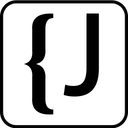
本文介绍了在 Go 语言中使用 `json.Unmarshal` 将 JSON 数据反序列化到接口时遇到的问题,并提供了一种解决方案。通过传递接口指针,可以正确地将 JSON 数据反序列化到实现了该接口的具体类型,从而避免 `panic: json: cannot unmarshal object into Go value of type main.Wrapper` 错误。
在 Go 语言中,使用 encoding/json 包可以将 JSON 数据反序列化到 Go 的数据结构中。然而,当尝试将 JSON 数据直接反序列化到一个接口时,可能会遇到一些问题。本文将深入探讨这个问题,并提供一种有效的解决方案。
假设我们有一个 Wrapper 接口和一个实现了该接口的 DataWrapper 结构体。我们的目标是将 JSON 数据反序列化到 DataWrapper 结构体中,然后通过 Wrapper 接口访问其中的数据。
package main
import (
"encoding/json"
"fmt"
)
type Data struct {
A string `json:"a"`
B string `json:"b"`
}
type DataWrapper struct {
Elements []Data `json:"elems"`
}
type Wrapper interface {
Unwrap() []interface{}
}
func (dw DataWrapper) Unwrap() []interface{} {
result := make([]interface{}, len(dw.Elements))
for i := range dw.Elements {
result[i] = dw.Elements[i]
}
return result
}
func unmarshalAndUnwrap(data []byte, wrapper Wrapper) []interface{} {
err := json.Unmarshal(data, &wrapper)
if err != nil {
panic(err)
}
return wrapper.Unwrap()
}
func main() {
data := `{"elems": [{"a": "data", "b": "data"}, {"a": "data", "b": "data"}]}`
res := unmarshalAndUnwrap([]byte(data), DataWrapper{})
fmt.Println(res)
}这段代码在运行时会抛出以下 panic:
panic: json: cannot unmarshal object into Go value of type main.Wrapper
这个错误表明 json.Unmarshal 无法将 JSON 对象反序列化到 Wrapper 接口类型的 Go 值中。这是因为 json.Unmarshal 需要一个指向可修改值的指针,以便它可以将反序列化的数据写入该值。当传递一个接口的非指针值时,json.Unmarshal 无法确定要修改的具体类型,因此会抛出错误。
解决这个问题的方法是传递一个指向实现了 Wrapper 接口的结构体的指针。通过传递指针,json.Unmarshal 可以找到底层具体的结构体,并将其正确地反序列化。

Easily find JSON paths within JSON objects using our intuitive Json Path Finder
 30
30

修改 main 函数中的代码如下:
func main() {
data := `{"elems": [{"a": "data", "b": "data"}, {"a": "data", "b": "data"}]}`
res := unmarshalAndUnwrap([]byte(data), &DataWrapper{})
fmt.Println(res)
}将 DataWrapper{} 替换为 &DataWrapper{},即传递 DataWrapper 结构体的指针。
package main
import (
"encoding/json"
"fmt"
)
type Data struct {
A string `json:"a"`
B string `json:"b"`
}
type DataWrapper struct {
Elements []Data `json:"elems"`
}
type Wrapper interface {
Unwrap() []interface{}
}
func (dw DataWrapper) Unwrap() []interface{} {
result := make([]interface{}, len(dw.Elements))
for i := range dw.Elements {
result[i] = dw.Elements[i]
}
return result
}
func unmarshalAndUnwrap(data []byte, wrapper Wrapper) []interface{} {
err := json.Unmarshal(data, &wrapper)
if err != nil {
panic(err)
}
return wrapper.Unwrap()
}
func main() {
data := `{"elems": [{"a": "data", "b": "data"}, {"a": "data", "b": "data"}]}`
res := unmarshalAndUnwrap([]byte(data), &DataWrapper{})
fmt.Println(res)
}现在,代码可以成功运行,并且能够正确地将 JSON 数据反序列化到 DataWrapper 结构体中,并通过 Wrapper 接口访问其中的数据。
当在 Go 语言中使用 json.Unmarshal 将 JSON 数据反序列化到接口时,务必传递一个指向实现了该接口的具体类型的指针。这样可以确保 json.Unmarshal 能够正确地找到底层结构体并将其反序列化。 避免传递接口的非指针值,以防止 panic: json: cannot unmarshal object into Go value of type main.Wrapper 错误的发生。
以上就是如何在 Go 中将 JSON 反序列化到接口的详细内容,更多请关注php中文网其它相关文章!

每个人都需要一台速度更快、更稳定的 PC。随着时间的推移,垃圾文件、旧注册表数据和不必要的后台进程会占用资源并降低性能。幸运的是,许多工具可以让 Windows 保持平稳运行。




Copyright 2014-2025 https://www.php.cn/ All Rights Reserved | php.cn | 湘ICP备2023035733号